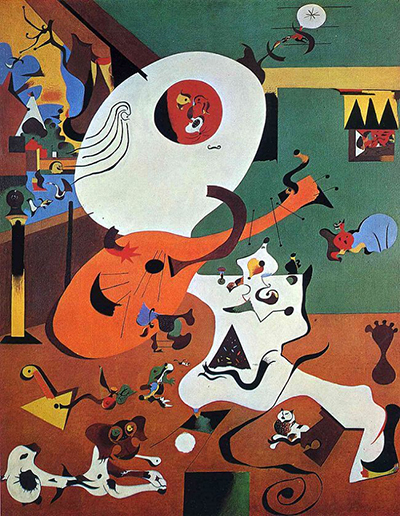This painting from 1928 was the subject of more preparatory drawings than almost any other artwork from Miro's career, underlining the importance that he placed on this piece.
The mid to late 1920s was a prolific period for the artist and much of his best work was produced during his summers at home in Montroig on the family farm. Dutch Interior I was put together through a series of drawings that slowly increased in detail before Miro felt ready to begin the main painting - all artworks were completed in the calendar year of 1928 alongside a large number of other notable contributions to the surrealist and abstract movements. He experimented with limitless space in some of his work at around this time but this painting feel particularly flat in terms of perspective. It was more shallow in terms of inspiration, focusing simply on an internal room scene, rather than contemplating the universe as seen in other series.
The artist was experiencing great enthusiasm for his career during this period and working particularly efficiently and effectively. Several letters have been uncovered where he tells others of his excitement over this artwork plus several others that were completed during this time. The Rijksmuseum in Amsterdam is the surprising host to the artist's inspiration for this painting - namely The Lutenist by Hendrik Martenszoon Sorgh from 1661. On comparison, one can quickly see the similarities in form, though at the same time being very different stylistically. The Dutch Golden Age is a highly respected contribution to European art history, providing some of the finest technicians the world has ever seen. Miro's version of the original painting shows a nod to the past as well as an extraordinary imagination to create something so different from it.
This painting features the trademark Miro use of bright colour with clear demarkation of shapes. There is also the typical reduction of complex forms into the minimalist approach they he appreciated. It was part of his revolution against traditional artistic styles, even though the content here was actually inspired by a contribution to that very same group. He was opinionated and bold, necessary characteristics for anyone looking to bring new ideas and techniques into a somewhat fussy art world which often turns it's back to change.




